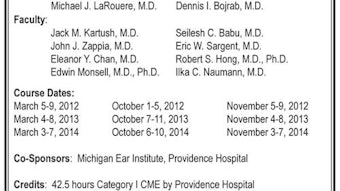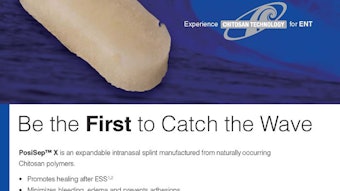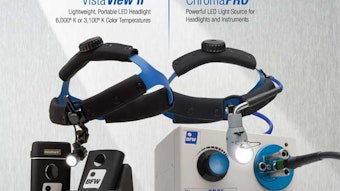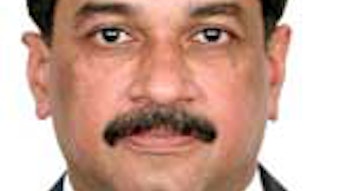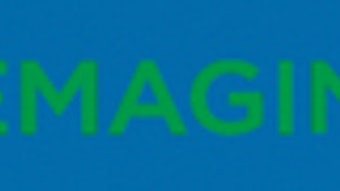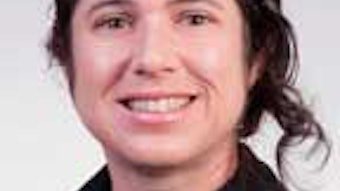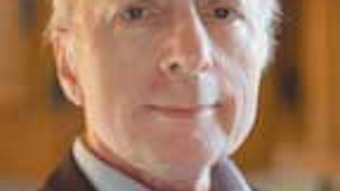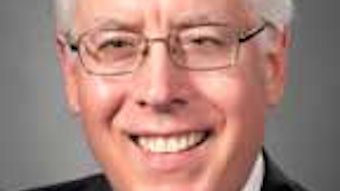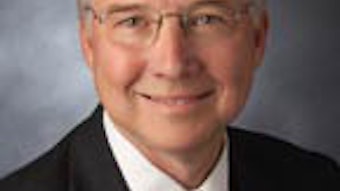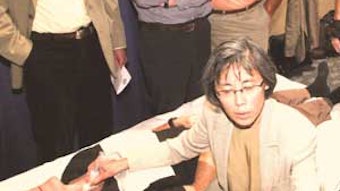Who Is My Curator?
David R. Nielsen, MD, AAO-HNS/F EVP/CEO If you love the art world, enjoy visiting museums, or spend time at historical sites, you have had significant experience with both volunteer and professional curators. Traditionally, we think of curators as skilled experts who oversee a large volume of information, property, or history, and present those elements that are felt to be of the most worth to the public. The word, “curator,” comes from the Latin curatus, “to care,” or cura, “care.” This is also the root of the chiefly British term, curate, a member of the clergy employed to assist a vicar or parish priest, or any ecclesiastic who is entrusted with the care of the souls of the parish. As we watch the rapid advances of the digital age, the explosion of social media, and the exponential increase in available information, we increasingly hear the term “curator” used to describe people who select from an unmanageable and overwhelming mass of information and present content that is organized, useful, or more meaningful. In his book, Curation Nation, Steven Rosenbaum outlines the reactions taking place in all aspects of our culture as we deal with information overload. We live in an era, he states, of data abundance. “In the old world, a handful of media outlets and large corporations could set the agenda for political discourse, pop culture, and emerging trends.” But in a few short years, all that has changed. “…thanks to the magic elixir of bandwidth and hardware, we’ve all got a television broadcast studio in our pocket, a printing press on our desktop, and a radio station in our [smartphone]…”1 With this explosion of information and content, opportunities for prioritizing, interpreting, organizing, selecting, combining, targeting, and sharing content are likewise exploding. In the strange supply and demand economics of social media, everyone is a provider, and anyone is a consumer. In this world, according to Rohit Bhargava on SocialMediaToday.com, “To satisfy the people’s hunger for great content on any topic imaginable, there will need to be a new category of individual working online. Someone whose job it is not to create more content, but to make sense of all the content that others are creating…The people who choose to take on this role will be known as ‘content curators.’”2 However, as Mark Schaefer posted recently on the same site, there are big problems with content curation, especially if it is being done commercially by business for customers. Following the announcement of a major financial institution’s initiative to roll out an automated content curation system he asks, “Why should I trust you with my news?…Whose problem are you solving?…One size does not fit all.” 3 Equally disturbing to him is the concern of an automated system of reviewing and choosing content. How can I be sure the content has been really customized for me? Is this something I want to turn over to a machine, or do I require the human touch? Because the Academy is an association of otolaryngologists, and is led, managed, funded, overseen, and strategically directed by otolaryngologists, we can answer Schaefer’s questions. Every otolaryngologist who is a member, participates in the annual meeting, serves on a committee, votes for officers, or engages in any other way in Academy or Foundation activity is a curator of content in some way. We can trust each other as colleagues, share perspectives, draw from common concerns, and find targeted information and solutions far more effectively than an outside proprietary interest group or media company. Yes, industry and media contacts, professionals, and interests are important to us. But as an association of volunteers, whose motivation is to provide the best patient care by collaborating on effective education, research, and health policy goals, we can be trusted. We can address our problems and our patients’ best interests, and we can prioritize, tailor, and target valued information to each other effectively. So I hope those who attend enjoy the week of “curated content” at our AAO-HNSF 2012 Annual Meeting & OTO EXPO in Washington, DC. I cannot thank you, our members, enough for the selfless manner in which you “curate” your world of knowledge and expertise and share with each other as we empower each other to provide the best otolaryngology care in the world. References Rosenbaum, S. Curation Nation. New York: McGraw Hill; 2011:72. (iBook version). Rosenbaum, S. Curation Nation. New York: McGraw Hill; 2011:73-74. (iBook version). Mark, S. Five Big Problems with Content Curation. Social Media Today. http://socialmediatoday.com/node/622296v. Accessed July 27, 2012.
David R. Nielsen, MD, AAO-HNS/F EVP/CEO
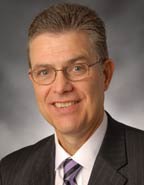 David R. Nielsen, MD, AAO-HNS/F EVP/CEO
David R. Nielsen, MD, AAO-HNS/F EVP/CEOIf you love the art world, enjoy visiting museums, or spend time at historical sites, you have had significant experience with both volunteer and professional curators. Traditionally, we think of curators as skilled experts who oversee a large volume of information, property, or history, and present those elements that are felt to be of the most worth to the public. The word, “curator,” comes from the Latin curatus, “to care,” or cura, “care.” This is also the root of the chiefly British term, curate, a member of the clergy employed to assist a vicar or parish priest, or any ecclesiastic who is entrusted with the care of the souls of the parish.
As we watch the rapid advances of the digital age, the explosion of social media, and the exponential increase in available information, we increasingly hear the term “curator” used to describe people who select from an unmanageable and overwhelming mass of information and present content that is organized, useful, or more meaningful.
In his book, Curation Nation, Steven Rosenbaum outlines the reactions taking place in all aspects of our culture as we deal with information overload. We live in an era, he states, of data abundance. “In the old world, a handful of media outlets and large corporations could set the agenda for political discourse, pop culture, and emerging trends.” But in a few short years, all that has changed. “…thanks to the magic elixir of bandwidth and hardware, we’ve all got a television broadcast studio in our pocket, a printing press on our desktop, and a radio station in our [smartphone]…”1
With this explosion of information and content, opportunities for prioritizing, interpreting, organizing, selecting, combining, targeting, and sharing content are likewise exploding. In the strange supply and demand economics of social media, everyone is a provider, and anyone is a consumer. In this world, according to Rohit Bhargava on SocialMediaToday.com, “To satisfy the people’s hunger for great content on any topic imaginable, there will need to be a new category of individual working online. Someone whose job it is not to create more content, but to make sense of all the content that others are creating…The people who choose to take on this role will be known as ‘content curators.'”2
However, as Mark Schaefer posted recently on the same site, there are big problems with content curation, especially if it is being done commercially by business for customers. Following the announcement of a major financial institution’s initiative to roll out an automated content curation system he asks, “Why should I trust you with my news?…Whose problem are you solving?…One size does not fit all.” 3 Equally disturbing to him is the concern of an automated system of reviewing and choosing content. How can I be sure the content has been really customized for me? Is this something I want to turn over to a machine, or do I require the human touch?
Because the Academy is an association of otolaryngologists, and is led, managed, funded, overseen, and strategically directed by otolaryngologists, we can answer Schaefer’s questions. Every otolaryngologist who is a member, participates in the annual meeting, serves on a committee, votes for officers, or engages in any other way in Academy or Foundation activity is a curator of content in some way. We can trust each other as colleagues, share perspectives, draw from common concerns, and find targeted information and solutions far more effectively than an outside proprietary interest group or media company. Yes, industry and media contacts, professionals, and interests are important to us. But as an association of volunteers, whose motivation is to provide the best patient care by collaborating on effective education, research, and health policy goals, we can be trusted. We can address our problems and our patients’ best interests, and we can prioritize, tailor, and target valued information to each other effectively.
So I hope those who attend enjoy the week of “curated content” at our AAO-HNSF 2012 Annual Meeting & OTO EXPO in Washington, DC. I cannot thank you, our members, enough for the selfless manner in which you “curate” your world of knowledge and expertise and share with each other as we empower each other to provide the best otolaryngology care in the world.
References
- Rosenbaum, S. Curation Nation. New York: McGraw Hill; 2011:72. (iBook version).
- Rosenbaum, S. Curation Nation. New York: McGraw Hill; 2011:73-74. (iBook version).
- Mark, S. Five Big Problems with Content Curation. Social Media Today. http://socialmediatoday.com/node/622296v. Accessed July 27, 2012.



